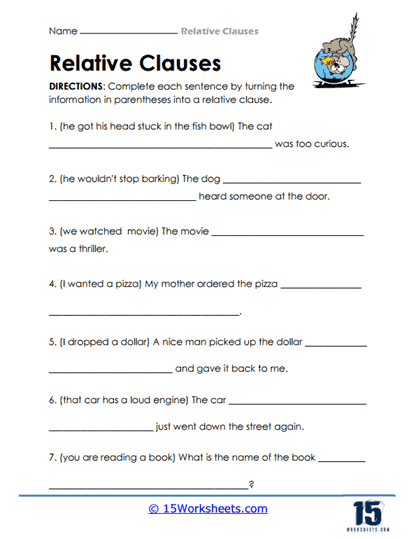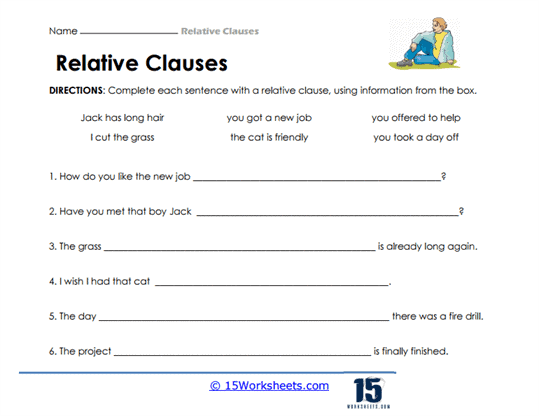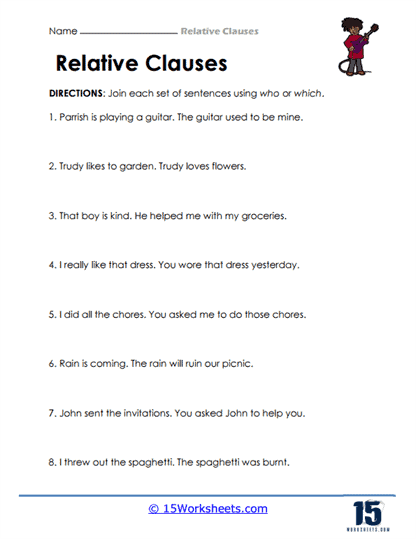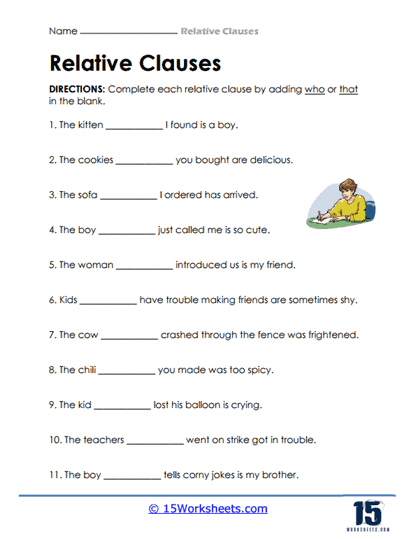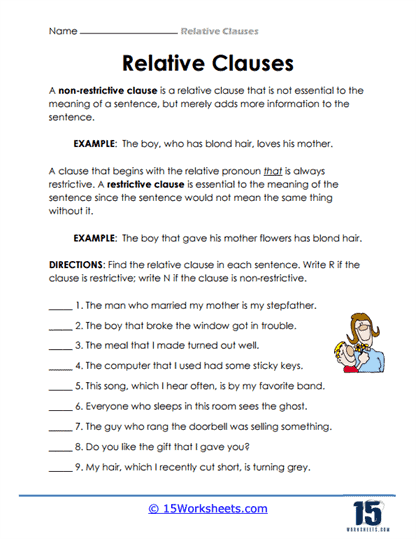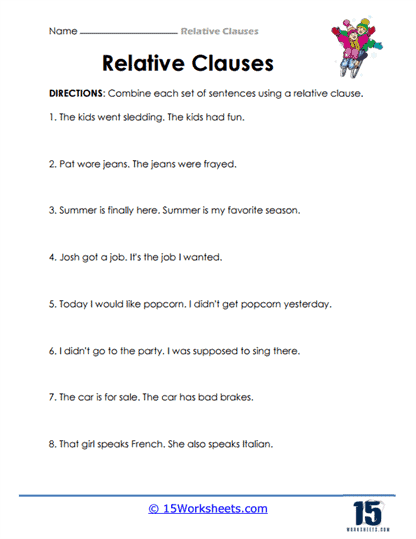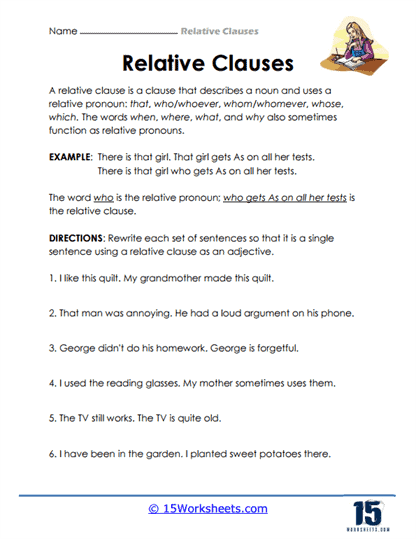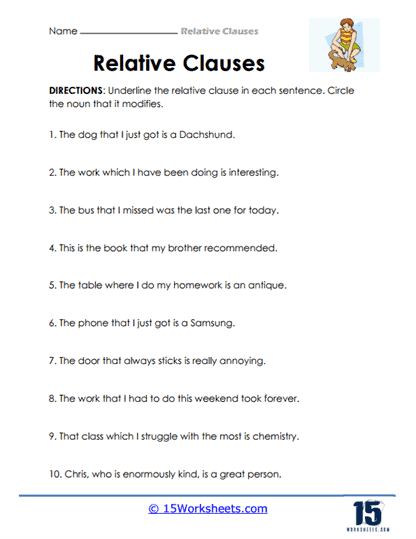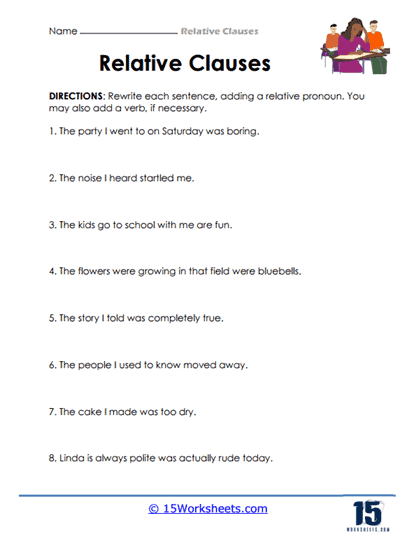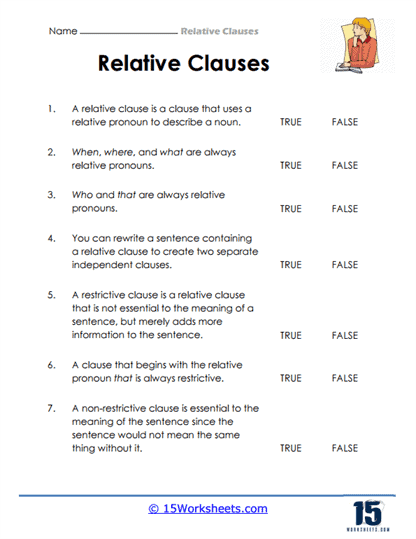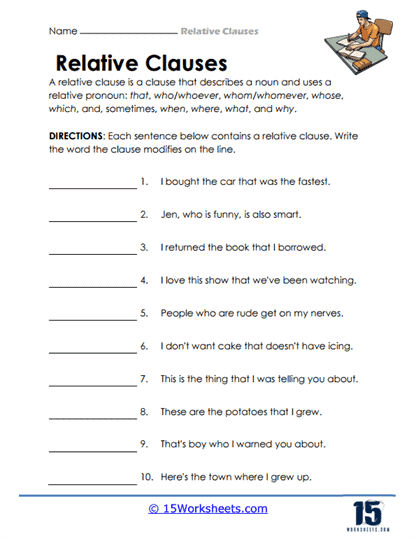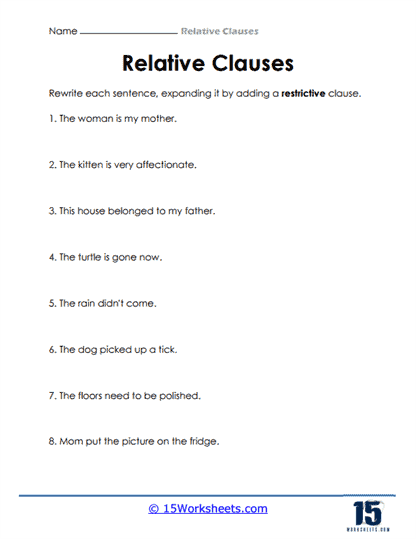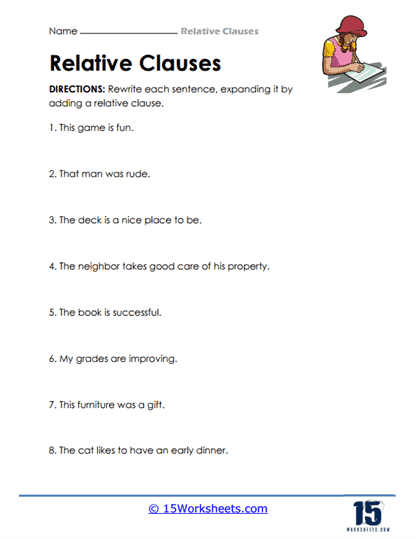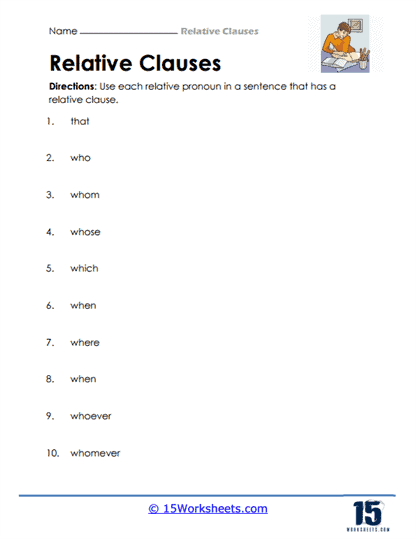Relative Clauses Worksheets
All About These 15 Worksheets
Relative clauses are dependent clauses that provide additional information about a noun or pronoun in a sentence. These worksheets typically include exercises and activities that focus on identifying, creating, and using relative clauses correctly.
Imagine you have a sentence like this: “I have a cat.”
Now, let’s say you want to give more information about the cat in that sentence. You can use a relative clause to do that. A relative clause is like a special group of words that adds extra details to a noun or pronoun in a sentence.
So, instead of just saying “I have a cat,” you can say, “I have a cat that loves to play with yarn.” The words “that loves to play with yarn” are the relative clause. They tell us more about the cat.
In a relative clause, we often use words like “who,” “which,” or “that” to connect it to the noun or pronoun it’s describing. In our example, we used “that” to connect the relative clause to the cat.
So, a relative clause helps us give more information about something or someone in a sentence. It helps make our sentences more interesting and descriptive!
These worksheets focus on working with sentences or passages with gaps or underlined sections where learners are required to insert appropriate relative clauses. These exercises aim to improve learners’ understanding of relative pronouns (such as who, whom, whose, which, and that) and relative adverbs (such as where, when, and why), as well as their ability to construct grammatically accurate and meaningful sentences.
What are Relative Clauses?
Relative clauses are groups of words that provide additional information about a noun or pronoun in a sentence. They start with relative pronouns like “who,” “whom,” “whose,” “which,” or “that,” or with relative adverbs like “where,” “when,” or “why.” Here are some examples for you:
The girl who is wearing a red dress is my best friend.
In this sentence, the relative clause “who is wearing a red dress” provides information about the girl. It tells us which girl we’re talking about.
The book that I borrowed from the library is very interesting.
The relative clause “that I borrowed from the library” tells us more about the book. It gives us information about where the book came from.
The dog, whose tail wags all the time, is very friendly.
Here, the relative clause “whose tail wags all the time” adds information about the dog. It tells us something specific about the dog’s tail.
This is the house where I grew up.
In this sentence, the relative clause “where I grew up” provides information about the house. It tells us a specific location associated with the house.
The movie that we watched last night was amazing.
The relative clause “that we watched last night” gives us information about the movie. It tells us when we watched the movie.


